Intel Core i9-7960X Review: Skylake-X At 16 Cores
Why you can trust Tom's Hardware
Rendering, Encoding, Compression & Decompression
Web Browser
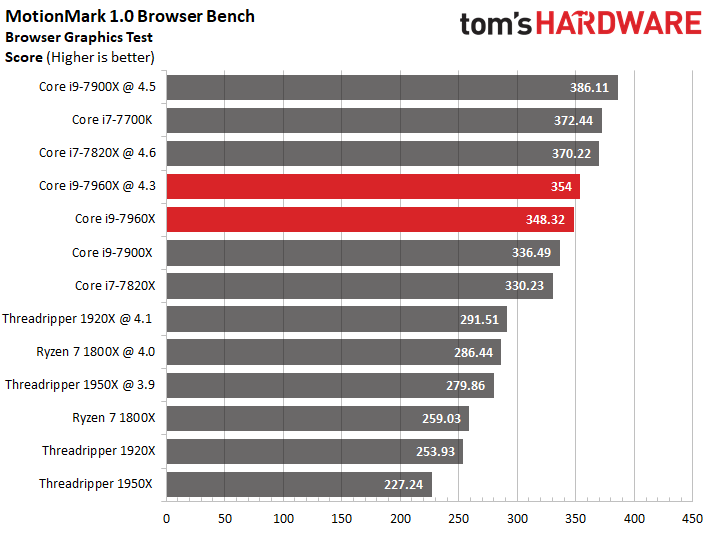
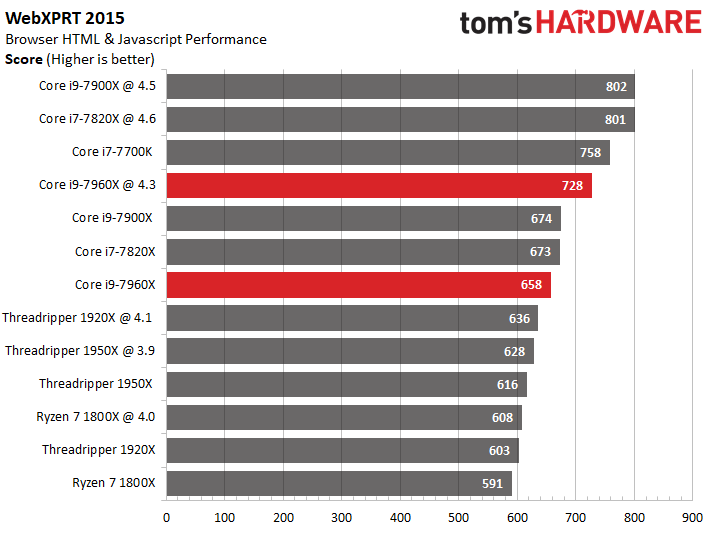
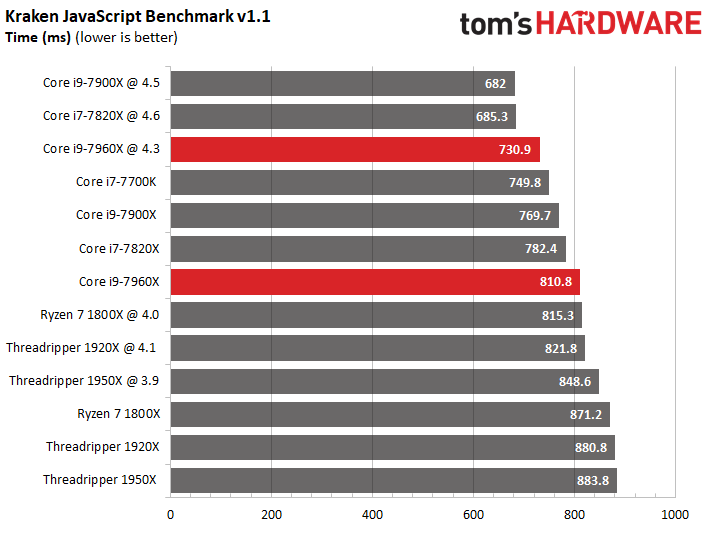
Dropping $1000+ for exceptional Web browsing performance is overkill, no doubt. But these tests do give us an idea of how responsive each CPU is using common desktop applications.
Our results line up based on clock rate and IPC throughput, it appears, highlighting the lightly threaded nature of many productivity-oriented workloads. Of course, those tasks do tend to favor Intel's architectures, which lead in every test.
Rendering
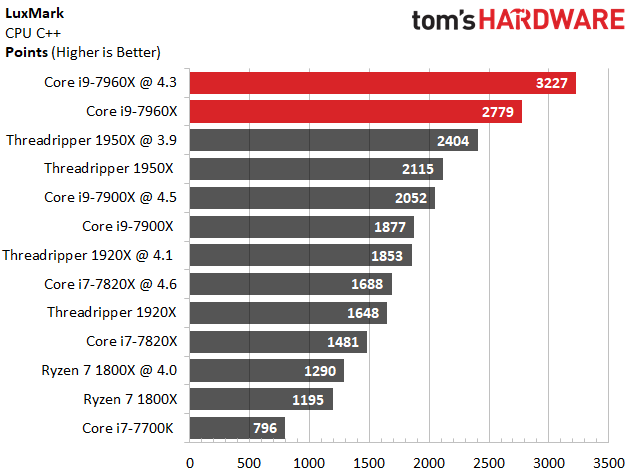
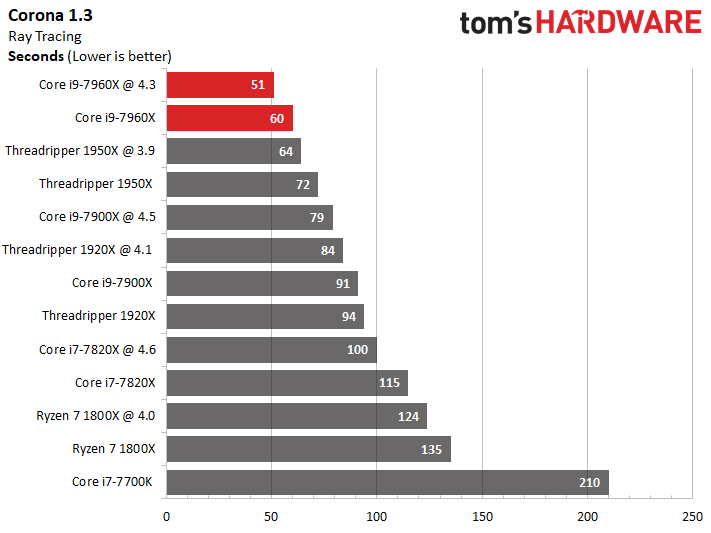

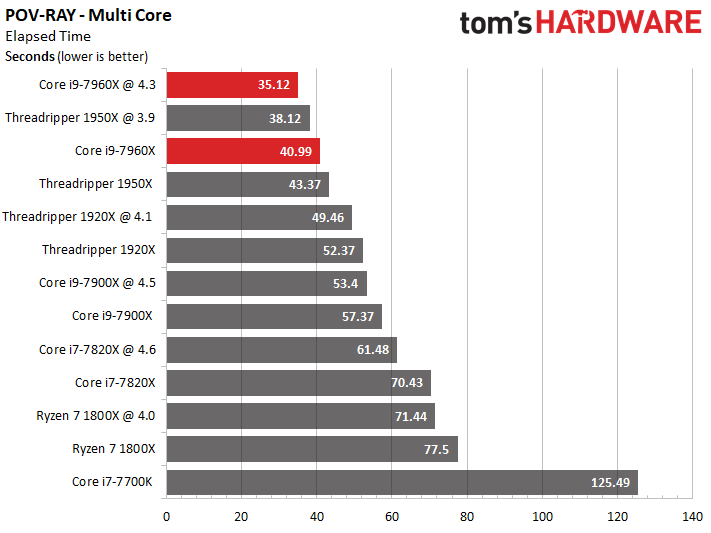
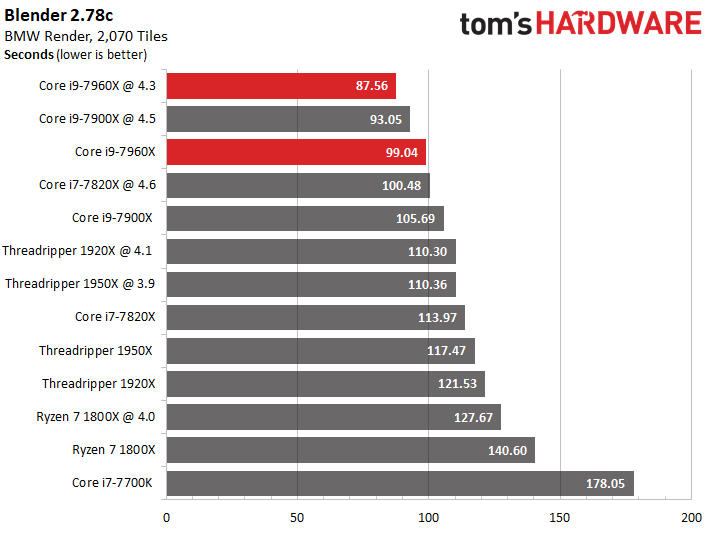
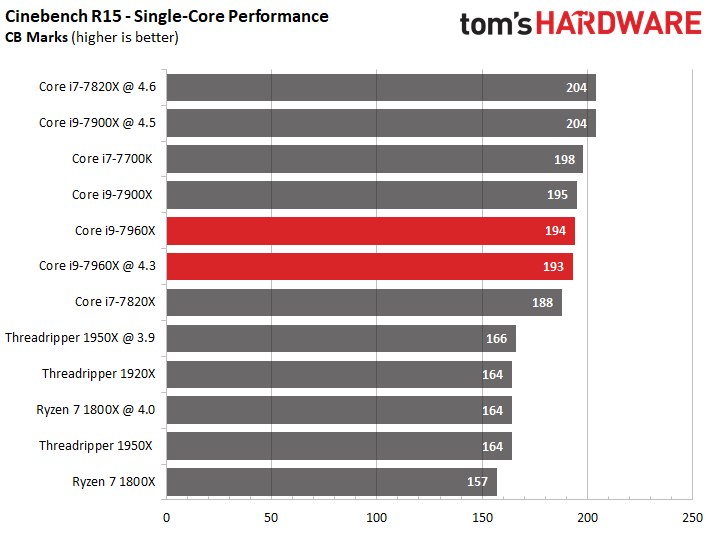
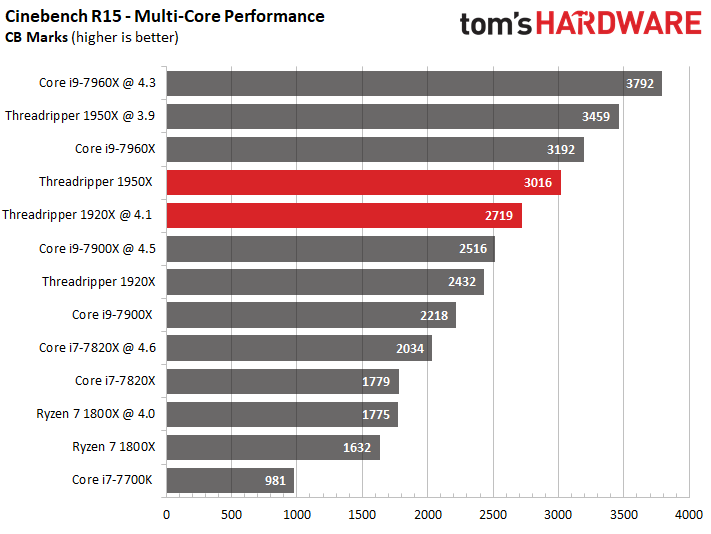
Heavy rendering workloads are easy fodder for high-end desktop CPUs, and Intel's Core i9-7960X delivers superior performance in almost every test we throw at it (except for the single-threaded ones).
The Kaby Lake-based Core i7-7700K outpaces Intel's Core i9-7960X in both single-threaded tests due to its higher Turbo Boost frequency and improved IPC throughput. Meanwhile, the tuned -7900X and -7820X flex their higher clock rates to carve out a lead in those same metrics.
Our stock -7960X beats the chip's overclocked configuration in the short single-threaded Cinebench test by virtue of its 4.4 GHz Turbo Boost 3.0 bin, which is slightly higher than the all-core 4.3 GHz we dialed in during our tuning session. In contrast, the single-threaded POV-ray benchmark caused Intel's Core i9-7960X to shed some frequency, likely due to increased thermal load during this longer test.
Encoding & Compression
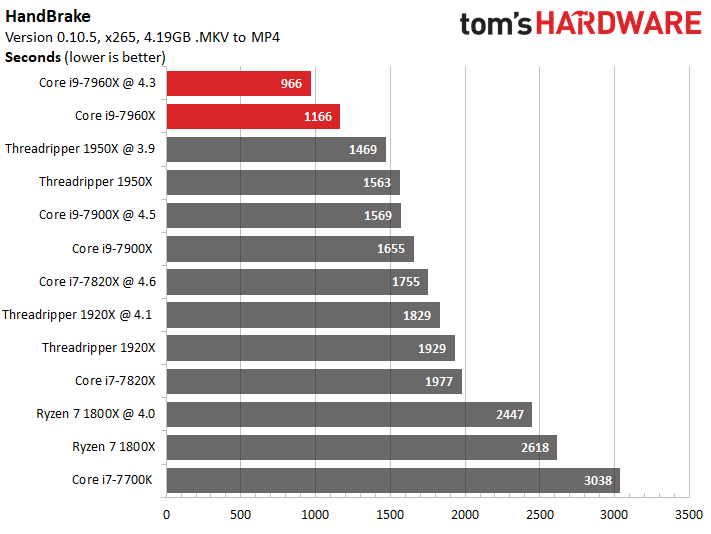
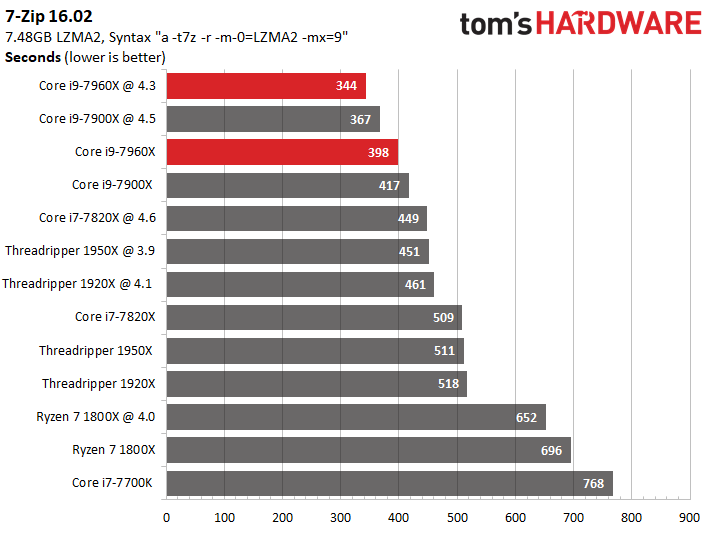
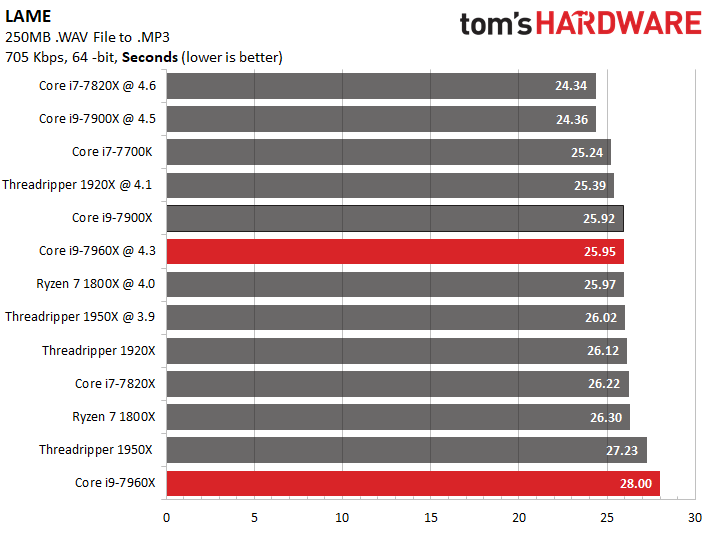
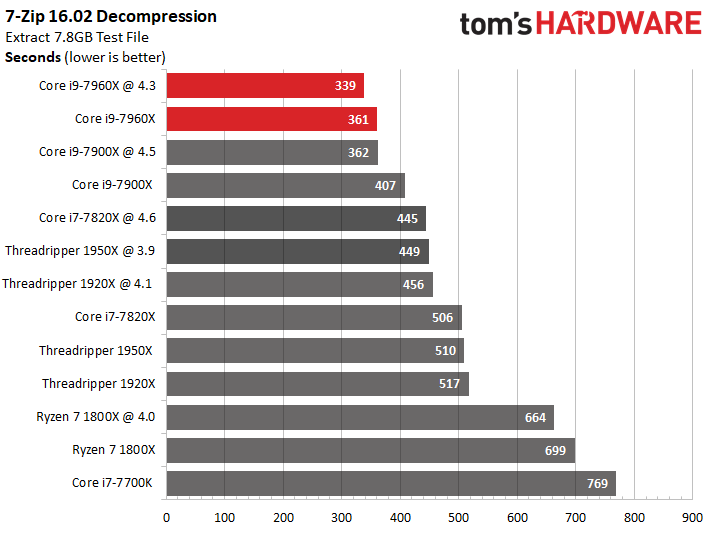
A chart-topping core count proves beneficial to the Core i9-7960X during our HandBrake and compression/decompression workloads. But the $1700 CPU stumbles during the LAME benchmark. Intel has confirmed that its mesh architecture can lead to performance regressions in a few applications, and it appears that LAME might benefit from optimization for the new architecture.
PCMark 10
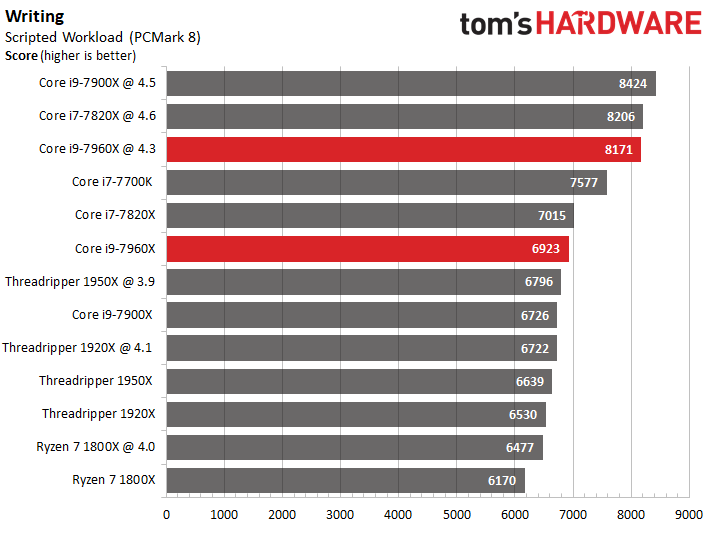
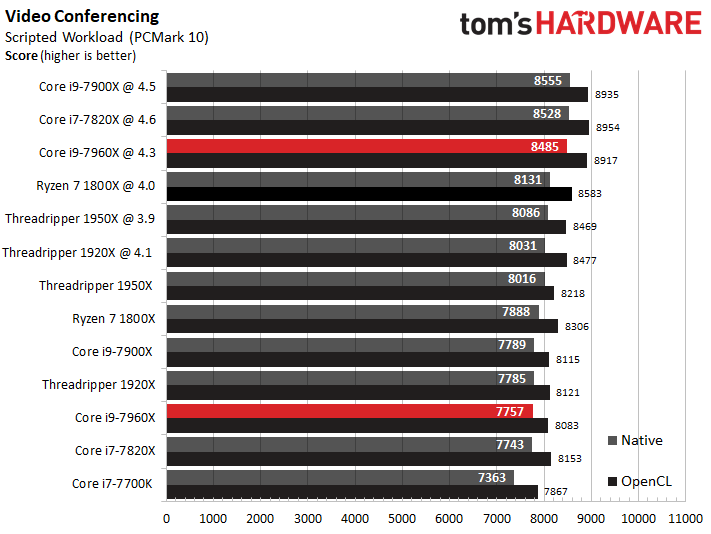
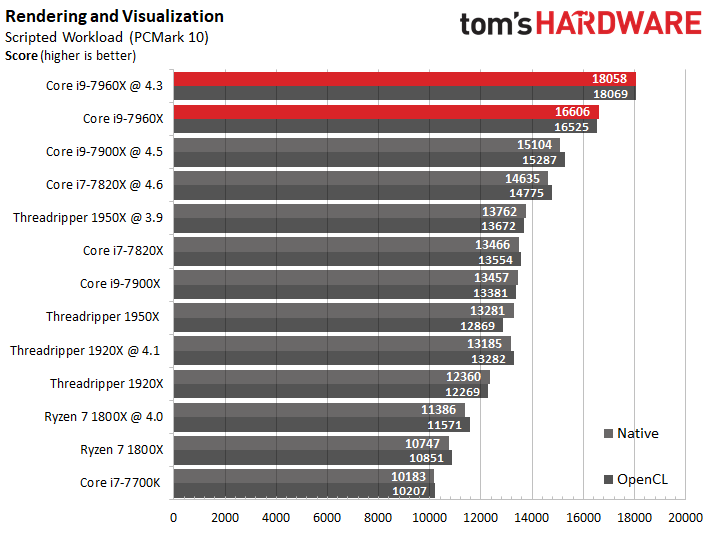
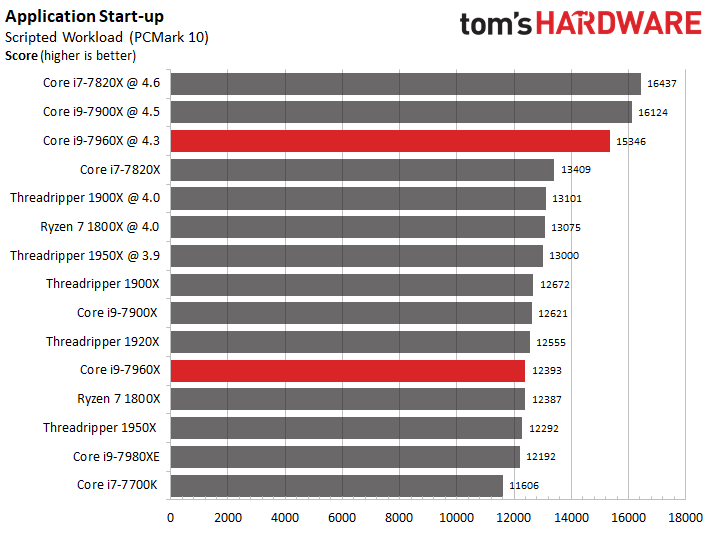

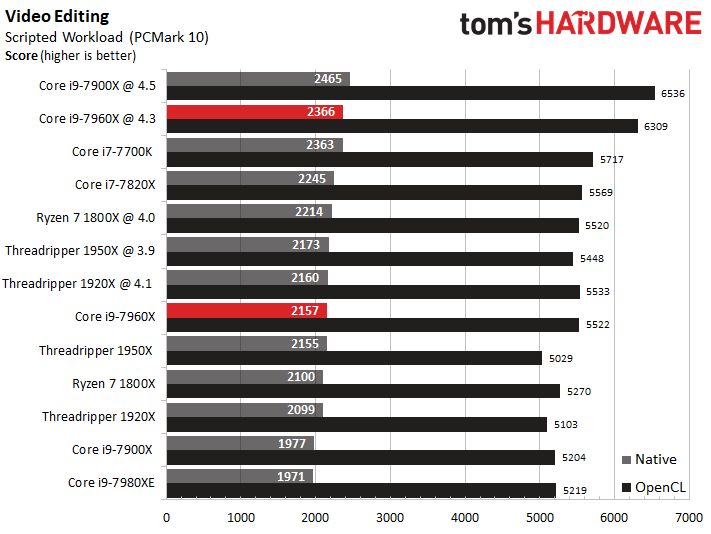
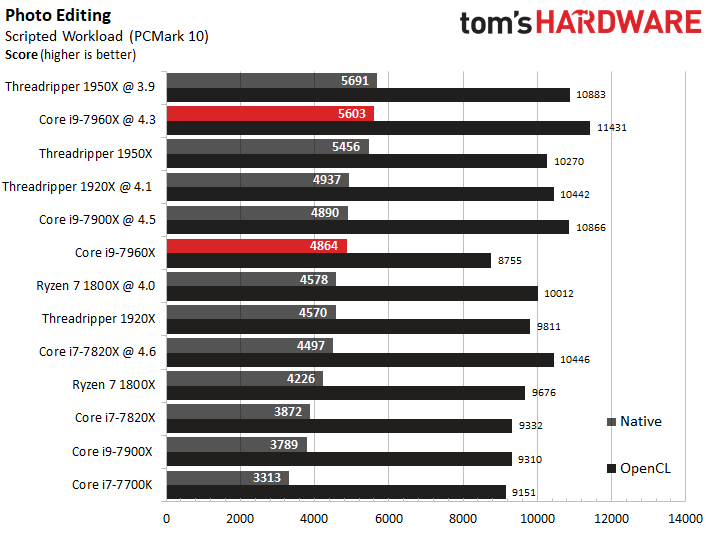
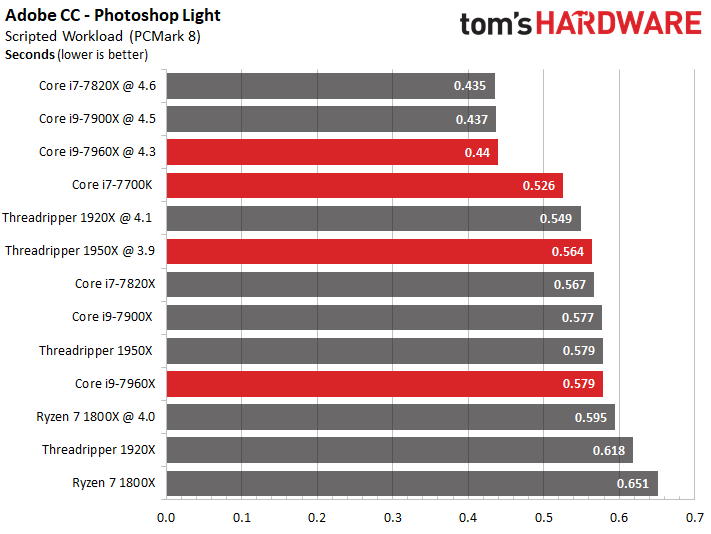
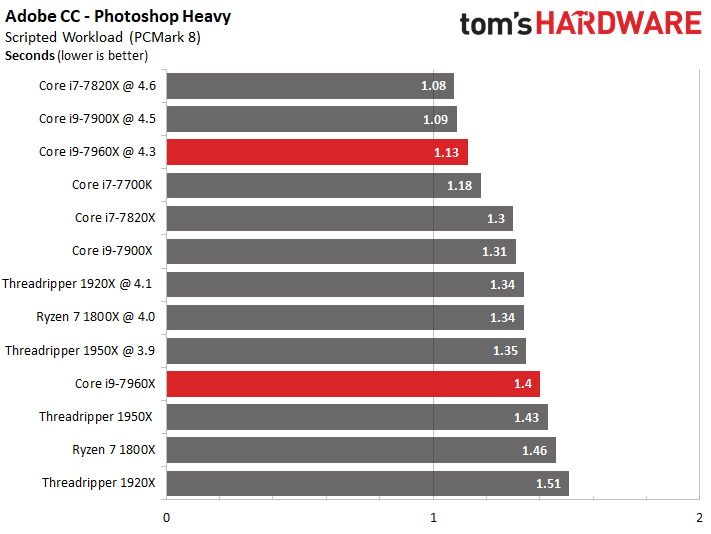
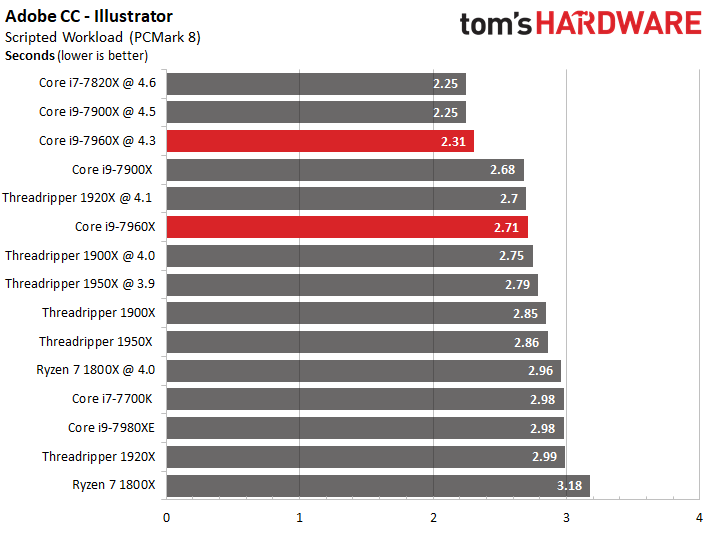
MORE: Best CPUs
Get Tom's Hardware's best news and in-depth reviews, straight to your inbox.
MORE: Intel & AMD Processor Hierarchy
MORE: All CPUs Content
Current page: Rendering, Encoding, Compression & Decompression
Prev Page Project CARS, Far Cry Primal & Rise of the Tomb Raider Next Page Conclusion
Paul Alcorn is the Editor-in-Chief for Tom's Hardware US. He also writes news and reviews on CPUs, storage, and enterprise hardware.
-
David_693 I think there is something missing here: 'Similar to the other Skylake-X CPUs, the -7960X supports up to DDR4-2666 memory.'Reply -
David_693 Well, for now, my i7-7700k is no slouch, can't wait to see what the i7-8700K's will be able to do. No rush to upgrade yet as I've only had the 7700k since March. Thanks to AMD for pushing Intel to produce better options.Reply -
klipschkiller Really, Intel, is this a joke? Why release a chip that requires water cooling, have bad thermals and power consumption to previous AMD's bulldozer.Reply -
hannibal Well, it is good for competition that AMD have cooler and better behaving product this time compared to Intel. It forces Intel to do better next time!Reply
Go AMD go! And keep Intel in its toes! Better products, better prices (?) to the customers. I hope that Intel is forced to reduce the pricing... -
zippyzion That is a supremely powerful chip... but, man... at what cost? I give a nod to the speed and power, but it is anything but practical. It isn't even that much faster than the competition in most tests, and a good deal of that competition comes from Intel themselves. It is really a case of, "why bother?". I'd suggest just getting the 7900 or the 1950 if you are looking at this segment. Why spend so much more for so little extra?Reply -
phobicsq Intel needs to stop using paste and do it right. It's beyond comprehension that they charge a lot more and and yet AMD charges less and does it right.Reply